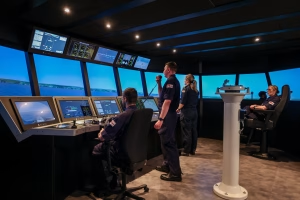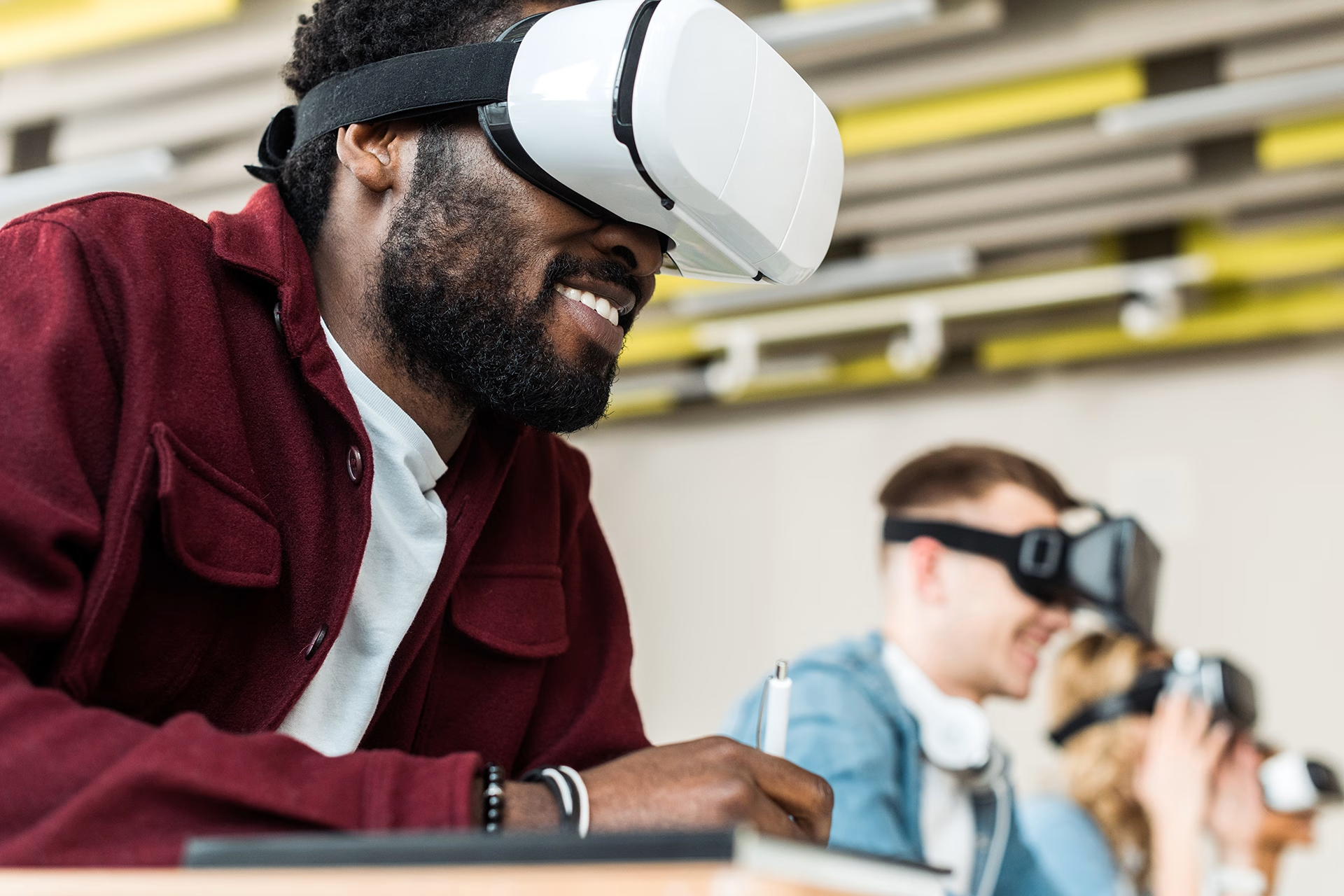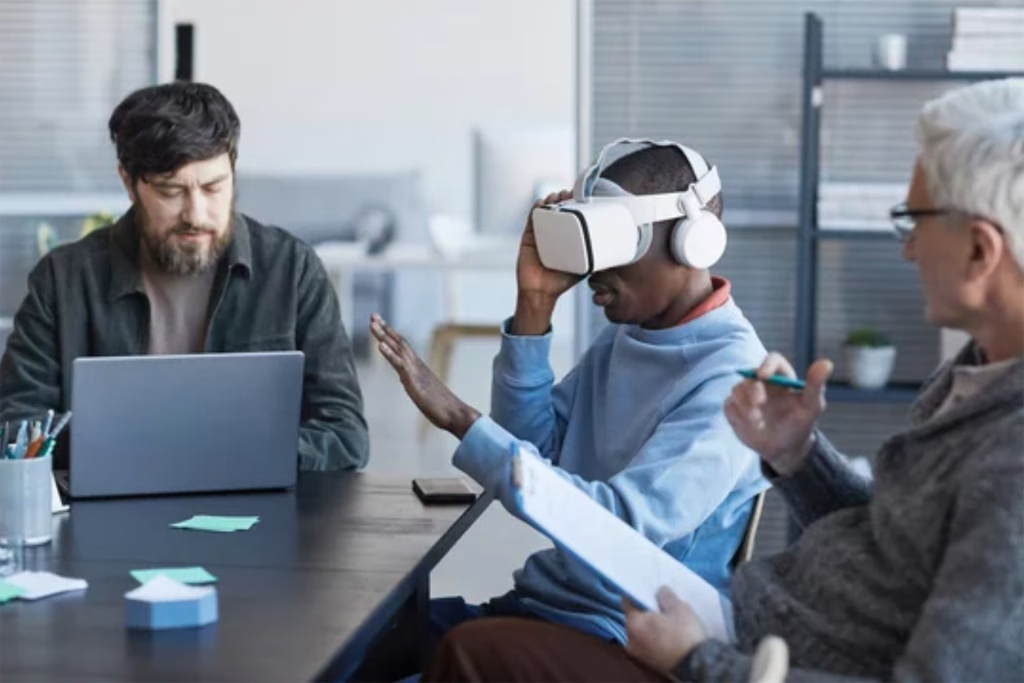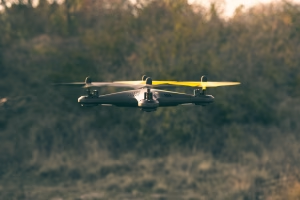
How Scenario-Based Training Builds Real Operational Readiness
We explore why scenario-based training delivers superior results for operational roles and how immersive VR technology is removing those barriers.
If you’ve clicked on this article, we’re guessing you’ve got a few questions. Maybe even a couple of reservations?
Like any fast-evolving technology, VR training comes with its fair share of misconceptions – especially around cost, complexity, and whether it’s as effective as traditional methods.
But the truth? It’s far more accessible – and infinitely more powerful – than most people think. And the wide range of options available provide value for even the most budget conscious projects, comparing extremely favourably to traditional forms of training.
In this guide, we’ll walk you through how to get started with immersive VR training.
We’ll look at how it integrates with the systems you already use (rather than working against them), and why it’s fast becoming the go-to choice for teams that need to train smarter, safer, and more affordably.

Integrating VR training isn’t about replacing everything you currently do. It’s about enhancing it.
Live simulation training remains invaluable. But it’s not always practical – or safe.
VR lets you augment your live programmes by replicating environments with high fidelity without needing to get boots on the ground, deck or in the cockpit.
That means you can rehearse the same scenario 100 times over, tweak conditions, rewind, fast forward and add pressure variables. You can also reset instantly, to practice scenarios repeatedly, and optimise learning outcomes.
In other words: you get live realism, without the live risks. And it’s a lot more scalable and flexible to manage than the real world.
VR solutions are designed to be modular and interoperable, working in tandem with existing systems to enhance the training experience – such as:
Existing learning management systems (LMS)
Current training programmes or protocols
Other digital or physical training environments
Asset tracking tools, communication systems, and even scenario playback or analysis tools
Rather than adding more systems to manage, VR can streamline fragmented workflows and create a central training environment where teams can build, review and repeat skills as often as needed.
One of the biggest myths around VR training is the cost.
Initial setup varies depending on scale, and most clients see a significant return within months, especially when factoring in:
Less downtime for live setups
Fewer travel and logistics costs
Reduced risk to equipment and people
Faster, repeatable and measurable training
A controllable, predictable environment, eradicating real-world weather and other physical environment concerns
No abortive costs or unpredictable changes due to weather dependency.
With options to tailor projects to your available budget, VR is no longer the preserve of big budgets. It’s accessible – and usually more cost-effective than traditional alternatives involving the physical environment.
Integrating VR training isn’t about replacing everything you currently do. It’s about enhancing it.
Live simulation training remains invaluable. But it’s not always practical - or safe.
VR lets you augment your live programmes by replicating environments with high fidelity without needing to get boots on the ground, deck or in the cockpit.
That means you can rehearse the same scenario 100 times over, tweak conditions, rewind, fast forward and add pressure variables. You can also reset instantly, to practice scenarios repeatedly, and optimise learning outcomes.
In other words: you get live realism, without the live risks. And it’s a lot more scalable and flexible to manage than the real world.
VR solutions are designed to be modular and interoperable, working in tandem with existing systems to enhance the training experience – such as:
Existing learning management systems (LMS)
Current training programmes or protocols
Other digital or physical training environments
Asset tracking tools, communication systems, and even scenario playback or analysis tools
Rather than adding more systems to manage, VR can streamline fragmented workflows and create a central training environment where teams can build, review and repeat skills as often as needed.
One of the biggest myths around VR training is the cost.
Initial setup varies depending on scale, and most clients see a significant return within months, especially when factoring in:
Less downtime for live setups
Fewer travel and logistics costs
Reduced risk to equipment and people
Faster, repeatable and measurable training
A controllable, predictable environment, eradicating real-world weather and other physical environment concerns
No abortive costs or unpredictable changes due to weather dependency.
With options to tailor projects to your available budget, VR is no longer the preserve of big budgets. It’s accessible - and usually more cost-effective than traditional alternatives involving the physical environment.
Integrating VR training isn’t about replacing everything you currently do. It’s about enhancing it.
Live simulation training remains invaluable. But it’s not always practical - or safe.
VR lets you augment your live programmes by replicating environments with high fidelity without needing to get boots on the ground, deck or in the cockpit.
That means you can rehearse the same scenario 100 times over, tweak conditions, rewind, fast forward and add pressure variables. You can also reset instantly, to practice scenarios repeatedly, and optimise learning outcomes.
In other words: you get live realism, without the live risks. And it’s a lot more scalable and flexible to manage than the real world.
VR solutions are designed to be modular and interoperable, working in tandem with existing systems to enhance the training experience – such as:
Existing learning management systems (LMS)
Current training programmes or protocols
Other digital or physical training environments
Asset tracking tools, communication systems, and even scenario playback or analysis tools
Rather than adding more systems to manage, VR can streamline fragmented workflows and create a central training environment where teams can build, review and repeat skills as often as needed.
One of the biggest myths around VR training is the cost.
Initial setup varies depending on scale, and most clients see a significant return within months, especially when factoring in:
Less downtime for live setups
Fewer travel and logistics costs
Reduced risk to equipment and people
Faster, repeatable and measurable training
A controllable, predictable environment, eradicating real-world weather and other physical environment concerns
No abortive costs or unpredictable changes due to weather dependency.
With options to tailor projects to your available budget, VR is no longer the preserve of big budgets. It’s accessible - and usually more cost-effective than traditional alternatives involving the physical environment.
When considering any VR solution, it’s important to build from the bottom up – starting with a clear picture of your precise needs. The location. The conditions. The challenges. The unique physical properties of your equipment, and the impacts of the environment on them.
After all, why go virtual at all if you can’t manage every detail users will find in the real world?
From there, it’s about matching the right solution, environment and integration to fit.
Here’s a step-by-step process we go through with every client.




Fully immersive? Scenario-based? Multi-user simulation? Integrated with your LMS?


Start small. Prove the model. Then expand with data-led confidence.

Metaverse VR is built on the idea that effective training shouldn’t be complicated, with intelligent technology that makes it simple for users.
We’ve helped teams across military, emergency response and specialist commercial sectors launch VR programmes with minimal disruption and maximum impact. And we’d be happy to help you do the same.

We explore why scenario-based training delivers superior results for operational roles and how immersive VR technology is removing those barriers.

VR represents a fundamental shift in how we think about preparation for conflict. The most capable forces of the next decade will be those investing in VR training.

For small and medium-sized enterprises in the UK defence sector, the 2025 Strategic Defence Review and Spending Review is pivotal.